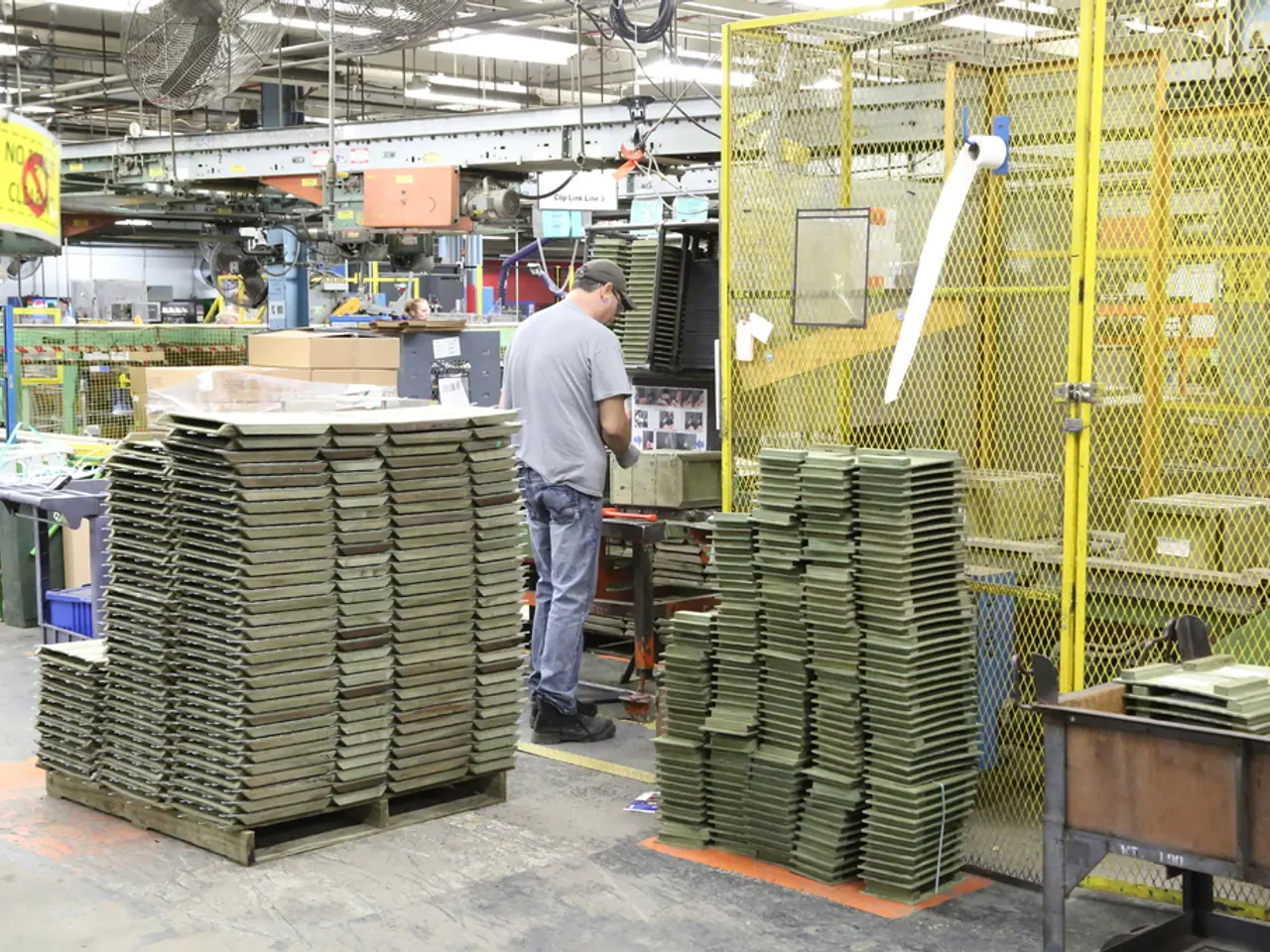Industrial production dipped to a 14-month low of 56.3 in February, down from January's 57.7 figure.
India's Manufacturing Sector Experiences 14-Month Low in February 2025
The Indian manufacturing sector took a temporary dip in February 2025, with the Purchasing Managers' Index (PMI) falling to 56.3, marking a 14-month low and indicating the slowest rate of expansion since December 2023.
The decline was primarily due to a moderated growth in production and sales, as well as a drop in input purchasing activity. According to the HSBC India Manufacturing PMI survey, the pace of manufacturing expansion eased compared to January, when the PMI was higher at 57.7.
Slower growth in production and sales was a significant factor in the February dip. Firms reduced their raw material and component buying, signaling cautious inventory restocking or concerns about future demand or cost pressures. The rates of expansion in output and sales remained elevated, but were not as robust as in January.
Concerns about rising costs also played a role in the February slowdown. According to a global economic intelligence report, stagnation in manufacturing expansion was linked to anticipations of increasing costs, which likely made manufacturers hesitant to ramp up production aggressively.
Despite the February decline, the manufacturing PMI remained well above 50, indicating ongoing expansion but at a slower pace. This moderate drag on growth may have temporarily affected industrial growth rates, but the manufacturing sector showed signs of recovery in subsequent months. The PMI rose to 58.4 by June, suggesting that the dip was temporary and demand conditions improved.
The slowdown in manufacturing growth may have ripple effects on India's overall GDP growth momentum. Manufacturing is a key driver for employment, exports, and investment in India’s economy. Slower growth can dampen these channels, but the resilient nature of the sector was evident in the strong business expectations and recruitment activity seen in February. Nearly one-third of survey participants foresee greater output volumes in the year ahead.
Inflation and cost concerns remain a watchpoint, as rising input costs can squeeze margins and slow hiring or investments despite strong order books seen in other months. The Indian economy grew by 6.2% in the December quarter of 2024, recovering sequentially from seven-quarter lows. For the full 2024-25 fiscal (April 2024 to March 2025), the government now pegs GDP growth at 6.5%.
In conclusion, the 14-month low in February 2025 reflected a cautious pause in manufacturing expansion due to softer production growth and concerns over costs. However, the sector showed signs of resilience, with the PMI recovering in subsequent months and business expectations remaining very strong. The manufacturing sector will continue to be an important driver of India's economy, and policymakers and firms will need to closely monitor inflation and cost concerns to ensure sustained growth.
Sources:
- HSBC India Manufacturing PMI
- The Hindu BusinessLine
- Business Standard
- Reuters
Read also:
- Catastrophic blast at a US Steel facility in Pennsylvania causes 2 fatalities, inflicts injuries on 10 individuals
- Hyundai's 2025 Elantra Hybrid to Cost $1,150 Less Than the 2024 Model in Pricing
- Solar worker faces potential job loss amid solar industry transition
- Predictive Discussions: interpreted Q2 packaging demand indications and their potential impact on your forthcoming freight sector for small transportation providers in the cardboard industry.








